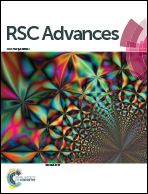Depollution of syringic acid aqueous solutions by electrochemical oxidation using high oxidation power anodes
Abstract
The anodic oxidation of syringic acid aqueous solutions has been comparatively studied using lead dioxide (PbO2) and boron-doped diamond (BDD) anodes in an electrolytic cell. The influence of several operating parameters such as current density and SA concentration on the performance of both systems has been investigated and the energy consumption has been also evaluated. Galvanostatic electrolyses always cause concomitant generation of hydroxyl radicals that lead to the SA destruction. The efficiency of the electrochemical process increases at lower current density and higher SA initial concentration while it decreases with the COD removal progress. The performance of the BDD anode is always better than that of PbO2, requiring shorter electrolysis time to reach overall mineralization, due to the high amounts of effective hydroxyl radicals generated from water oxidation at each anode, which lead to a higher current efficiency and a lower specific energy consumption when BDD anode was used. A possible reaction mechanism for SA oxidation with ˙OH was proposed. The kinetics decay for the SA degradation on the PbO2 anode follows a pseudo-first order reaction with a rate constant of 8.3 10−3 min−1 for a japp value of 15 mA cm−2.


 Please wait while we load your content...
Please wait while we load your content...